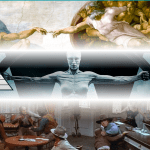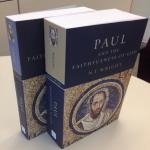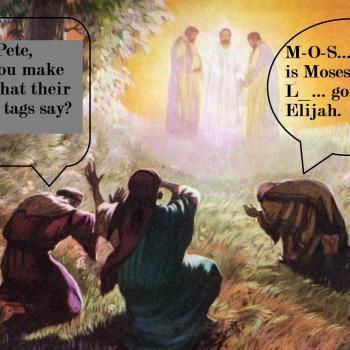Longtime readers of this blog will recall that I have an activity that I run in my class on the historical Jesus, in which I get students to reenact what the Jesus Seminar became famous for doing at its meetings. The Jesus Seminar, for those who may not be familiar with it, produced a variation on the classic red letter editions of the Gospels. They voted as a group on which sayings of Jesus they consider authentic – the actual words of Jesus; which provided the gist but probably not something really close to what Jesus said; which may be in essence still true to the emphases of Jesus but owe more to the later church; and which are simply inauthentic. They voted using colored beads: red, pink, grey, and black. These correspond to the views on the authenticity of the saying in question listed above, so that the resulting edition still has “the very words of Jesus himself in red letters,” but very few of the sayings attributed to Jesus in the Gospels end up printed in that color.
I got students to do the same things, giving them a particular saying in its various forms across ancient sources, letting them debate, and then asking them to vote.
As a pun-lover, I think the best part is that we get to call ourselves “the Jesus SeM&Minar.”
This year, I took a step that I never did before. In the past I’ve simply had students bring M&Ms and we’ve decided what the regular colors would correspond to in the scale. This year, I placed an order for custom M&Ms for use in this activity. They are red, pink, grey, and black, and some of them say “Jesus SeM&Minar” on them!
Keith Reich kindly shared details of his own experience using this activity in his class. I’ll encourage you to read his post for a more detailed description of the activity and how it did actually unfold on a past occasion in his classroom. The essence of it in brief is that we pretend we are the Jesus Seminar – we take a saying in isolation from its context, looking at all versions available from different sources, and we discuss and debate which is likely to represent the earliest form and then whether that form is authentic. Considerations such as the classic criteria of authenticity are brought to bear.
Then we vote, secretly, by dropping a colored M&M into a box with a hole cut in the top. We then tally the votes and figure out the average. (Students can also learn the useful skill of calculating their grade point average through this activity).
The fact that students can vote anonymously is an important aspect of the exercise – in my experience, the vote’s results may sometimes surprise me and the class, as higher or lower degrees of skepticism about the material is expressed than anyone would have expected based on things students said explicitly.
The Jesus Seminar, as far as I know, doesn’t get to eat the beads used for voting once that process is over, and so the case can be made that our way of doing things doesn’t merely imitate theirs, but is superior.
What do you think of this way of learning through doing in a class about the historical Jesus?
In my own experience, this has useful takeaways not only related to the Jesus Seminar or even the historical Jesus. It also helps students learn the math involved in calculating a GPA. And as students saw in my class this semester, it is possible for only one person to cast a vote of a particular color, and yet the average to be there. Sometimes a greater complexity lies behind the color coding in a printed edition of the Gospels than one might assume.
If anyone is interested, I have some extra packets of custom M&Ms that I had made, and I am happy to bring some to Denver to AAR/SBL. I don’t know what the shelf life is of M&Ms, but I’d rather pass these on to others who want to try the activity, rather than keep them until the next time, which will probably be a couple of years from now.













